Feel that sun on your face? Spring is finally here—and that means pool season is right around the corner! If you’re ready to open your pool for the hot-and-sunny days ahead, these six easy steps will get it sparkling in no time!
1. External clean-up
Before you start on the pool itself, clean up the areas around it. This includes sweeping away any debris (like grass or mulch) to keep it from getting into the pool once you uncover it.
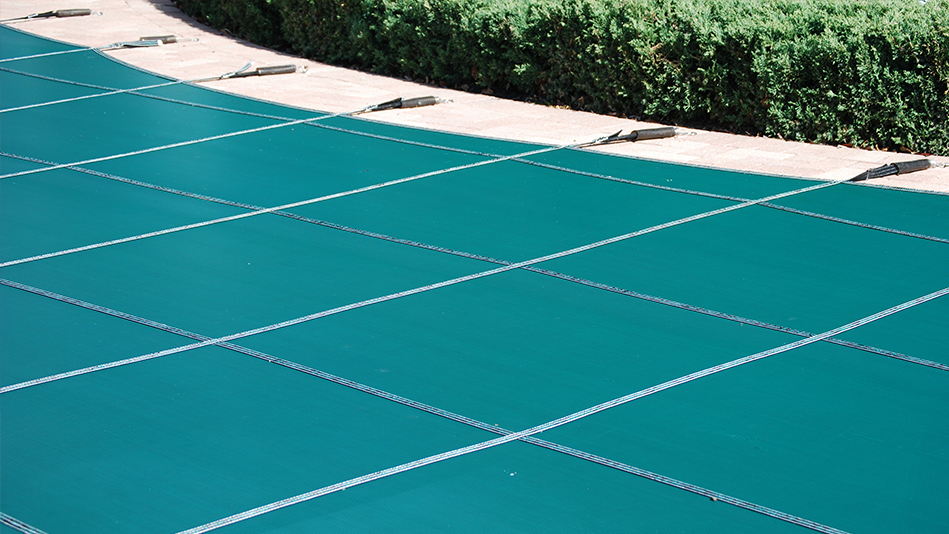
2. Remove your pool cover
Removing your pool cover is a 2-person job, so make sure to have someone lending a hand! Bribing them with summer pool access should help you close the deal.
- If your pool cover has standing water on top, use a pool skimmer or brush to gently remove debris, then drain off the water with a submersible pump or sump pump. You want to prevent as much of that gunk from falling into your pool as possible when you remove the cover.
- Detach your pool cover from its anchor points, and with one of you on each side of the pool, lift and fold it from one end to the other accordion style, trying your best not to drop any debris in the water. Please note: Avoid dragging the cover, as it can catch and tear. Work together to lift it up and carry it to another place in your yard where you can spread it out.
- Once you’ve spread it out away from the pool, use pool cover cleaner or car wash soap and a scrub brush to clean it off gently but thoroughly, then spray it down and let it dry completely before folding it up.
- Store the pool cover in a sealed container to prevent any weather or critter damage while in storage.
Now that you’ve uncovered your pool, you may be surprised to find green or nearly black water. This is just algae buildup that has accumulated over the winter, which will be cleaned in later steps.
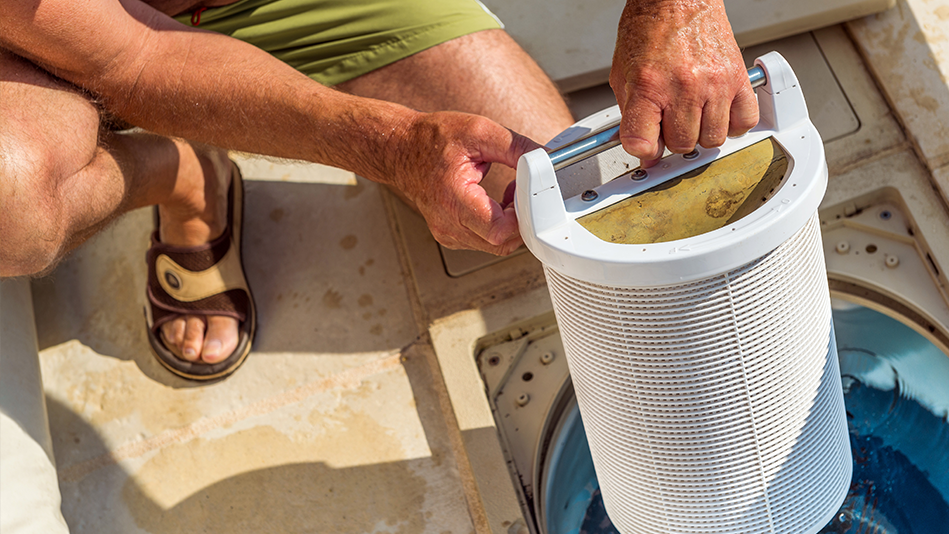
3. Clear your pool’s plumbing lines
If your pool was winterized properly, you should have winter plugs in your return lines and ice compensators in the skim buckets.
- Remove the winter plugs. You may see air bubbling up when you remove them; this is good, because it means the lines were properly blown out pre-winter.
- For each skim bucket, remove the ice compensator and put in the pool skimmer basket.
- If you used skimmer plates (which prevent water from entering the skimmers), remove those as well.
The pool water levels may have lowered over winter. Use a hose to fill it up to about mid-level of the pool skimmers, preferably with a hose filter to prevent unwanted metals from entering the pool water. Once the water level is where you want it, use a handheld pool skimmer to clean up any additional leaves and debris.
4. Reinstall any pool accessories
Now is a good time to reinstall any pool accessories you may have removed during the winterization process, such as ladders, diving boards, and lights. Be sure to inspect each for wear and tear prior to installation: You don’t want any rusted metal or broken edges in with your swimmers. This is also a good time for some diving board preventative maintenance.
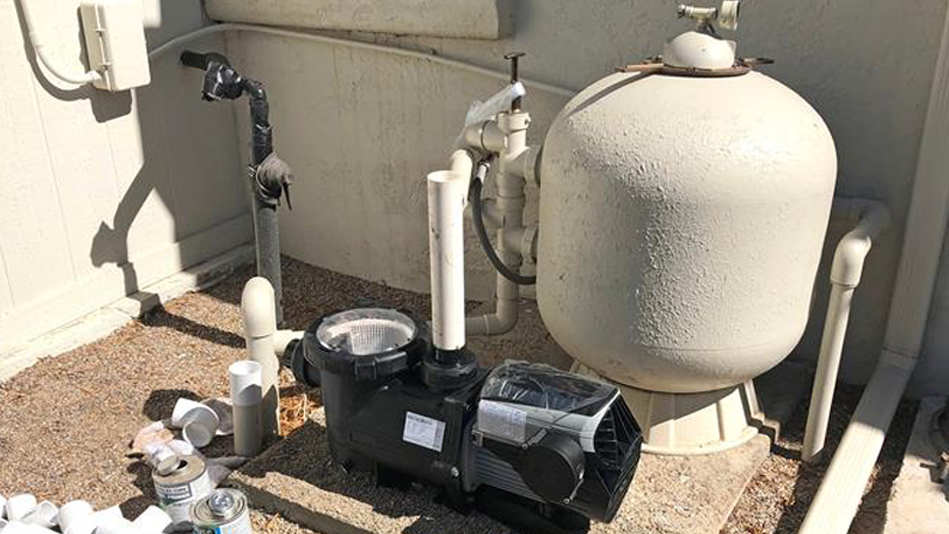
5. Inspect your pool filter
Now to get the pool filtration system going!
- Replace all the drain plugs in the pump and filter. The plugs may be stored inside of the pump housing for safe keeping.
- Remove the pump lid and pop off the O-ring to give it a quick inspection. Make sure it’s not brittle or dry and has no cracks, then put on a protective glove, squeeze about a quarter-sized amount of Teflon-based lubricant into your hand, and spread it liberally along the O-ring. This helps it create a seal and maintain its flexibility. Pop the O-ring back onto the pump lid and reinstall it on the pump.
- Switch the filter system from Winterize to Filter and turn it on. Check to make sure water is flowing through the pump—if not, you may need to prime the pump (see below).
- Let your filter and pump circulate the water for 12 to 24 hours. In the meantime you can sweep and vacuum excess debris and gunk out of your pool.
How to prime your pool pump
If you need to prime your pump, make sure it’s off, take the pump lid off, and fill the pump with water. Then close it and turn it back on, and it should start to suck the water through. You’ll know for sure it’s working when you see water bubbling in your pool, which means it’s starting to circulate.
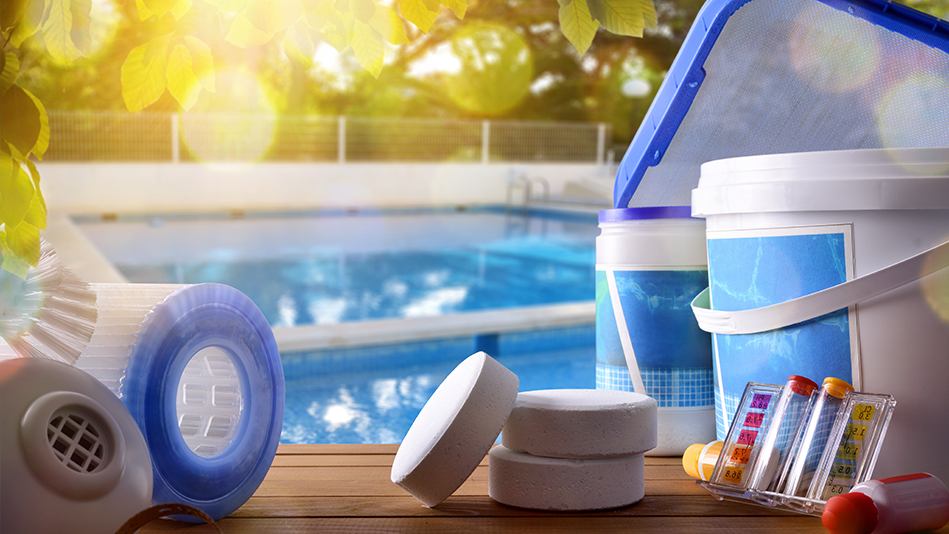
6. Add pool chemicals
As awesome as pool filters are, they still need a little help. This is where pool chemicals come in handy, but you need to know which chemicals to use and how much of each, as adding the right chemicals early on helps you prevent algae and cloudy pool water later.
Start by taking a sample of your pool water to your local pool supply store to check for pH, alkalinity, and calcium. You can test it yourself using test strips, however a pool supply store assessment will be more accurate—plus they can advise exactly how much of each chemical to use for pristine water. They can also determine if there are any metals in your water, which you would want to remove with a different chemical.
Pro Tip: The right chemical balance will be calculated based on the number of gallons of water in your pool. Not sure how many gallons your pool holds? Check out this Pool Volume Calculator!
IMPORTANT: Make sure you’re wearing protective gloves and eye protection while handling any swimming pool chemicals. Thousands of ER injuries every year come from chemical burns caused by exposure to these chemicals. Always read the application instructions and warnings on the packaging.
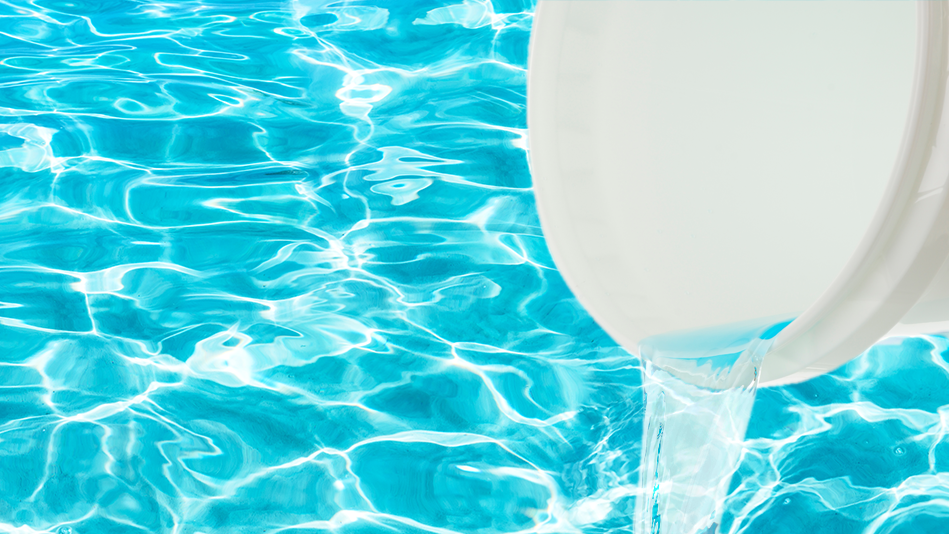
How to shock your pool
Once the water is properly balanced, you can add pool shock. Look for Calcium Hypochlorite, which is the primary active ingredient that kills the algae in the water: You’ll need 1 pound for every 10,000 gallons of water.
We recommend that you shock your pool at night, as sunlight can burn off the shock ingredients too early.
The best way to shock your pool is to dilute it first. Fill a large bucket with pool water and then add one bag of the pool shock. (Never add water to pool chemicals: Always add the pool chemicals to the water.) Stir it up with a clean paint stirrer (without splashing), then walk around the pool as you slowly pour the mixture in. Follow this same procedure for every remaining bag.
Leave the filtration system running for another 24 hours to mix up the shock and filter out the remaining debris.
Still cloudy?
If your pool is still cloudy, a Clarifier from your local pool supply store should fix the problem. It acts as a sort of coagulant, causing the tiny particles to come together into larger bits so your filter can capture and clean them out. Follow the container instructions and run the filter for another 24 hours to finish clearing the water.
Visit us on Facebook, LinkedIn, Twitter or Instagram to tell us your thoughts!
